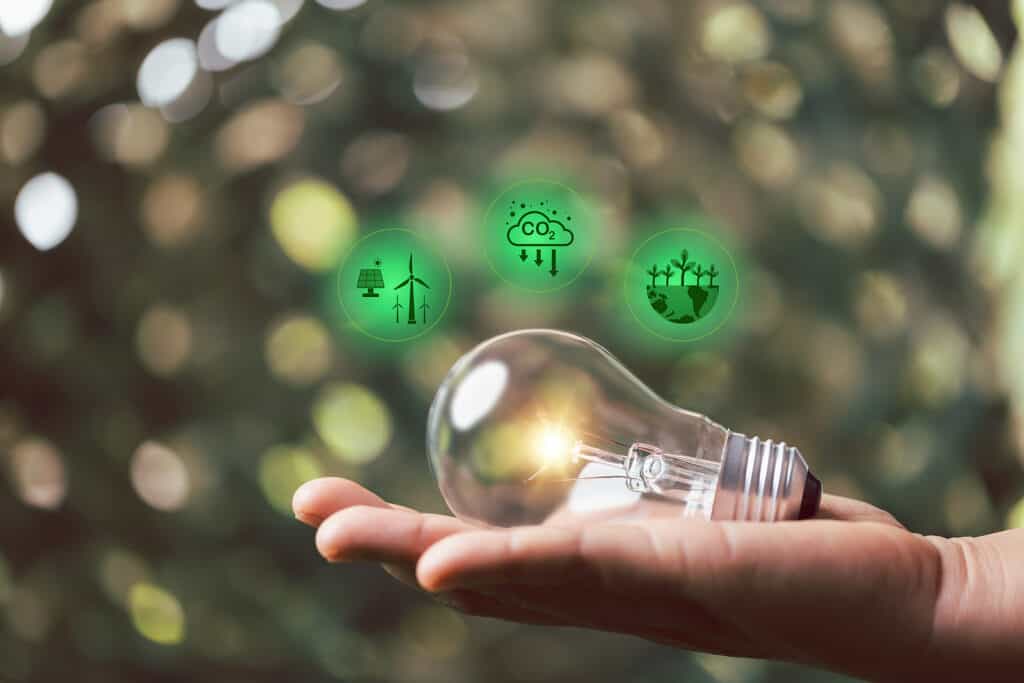From Zero to Hero: The Rise of Energy Saving Technologies
As a homeowner, I've come to realize the critical issue we face concerning energy consumption. Our heavy reliance on non-renewable energy sources like coal, oil, and natural gas has caused severe environmental damage and depleted precious natural resources. With the demand for energy constantly on the rise, it's clear that we need to make a change and embrace more sustainable and renewable energy solutions.
One of the most effective ways I've found to reduce my energy consumption is by incorporating energy-saving technologies into my home. For instance, I decided to install a smart thermostat to regulate our heating and cooling systems more efficiently. This simple yet innovative device has proven to be a game-changer in terms of saving energy and reducing our utility bills.
What are energy-saving technologies?
Energy-saving technologies refer to a range of practices, processes, and devices that are designed to minimize the amount of energy used by various systems and structures. The purpose of these technologies is to conserve energy and reduce the overall energy consumption of appliances, machinery, and buildings in residential, commercial, and industrial settings. By using energy-saving technologies, we can minimize the negative environmental impact caused by energy consumption and save money on energy bills.
One of the most common examples of energy-saving technologies is LED lighting, which is more energy-efficient than traditional lighting systems. This is because LED bulbs consume less energy while providing brighter and longer-lasting light. Similarly, smart thermostats are another type of energy-saving technology that helps optimize energy consumption in residential and commercial buildings. These thermostats can adjust the temperature automatically based on the occupancy of the building and can be controlled remotely through mobile devices.
Energy-efficient appliances are another important type of energy-saving technology that is designed to consume less energy than traditional appliances. They are designed to use less water, electricity, and gas, which results in significant savings on utility bills over time. Additionally, the use of solar panels is becoming increasingly popular as a means of generating renewable energy and reducing energy consumption in both residential and commercial settings. These technologies utilize the energy from the sun to produce electricity, thereby reducing the reliance on non-renewable sources of energy.

The Rise of Energy-saving Technologies:
Over the past few decades, the landscape of energy saving technologies in industries has undergone a profound transformation, propelled by continuous advancements and innovations. These cutting-edge solutions have not only become more cost-effective but have also expanded their accessibility, ushering in a new era of sustainability and efficiency. Let us delve into the significant milestones that have fueled the rise of these game-changing technologies.
The Energy Star Program
Back in 1992, the United States Environmental Protection Agency (EPA) took a momentous energy efficient technologies in buildings by rigorously certifying products that meet stringent energy-saving standards. Products adorned with the prestigious Energy Star label are proven to outperform their counterparts, offering consumers substantial savings on their energy bills while reducing environmental impact.
LED Lighting Revolution
A revolution in the lighting industry occurred with the advent of Light Emitting Diode (LED) technology. These ingenious light sources not only outshine traditional incandescent bulbs but also consume significantly less energy. Moreover, they boast an extended lifespan and generate less heat, making them a safer and more sustainable choice. According to the Department of Energy, LED lighting can slash energy consumption by up to a staggering 75% when compared to conventional incandescent bulbs.
Smart Thermostats
Embracing the digital age, smart thermostats have become a key player in energy conservation. These intelligent devices grant users the power to remotely control their home's temperature via user-friendly smartphone applications. With the ability to learn user preferences and patterns, smart thermostats autonomously adjust temperatures for optimal efficiency, even detecting when inhabitants are away to conserve energy and reduce utility costs.
Energy-Efficient Appliances
The drive towards energy efficiency has extended to household appliances such as refrigerators, washing machines, and dishwashers. Energy-efficient models now abound in the market, designed to curtail resource consumption significantly. By utilizing cutting-edge technology, these appliances use lesser amounts of water, electricity, or gas without compromising on performance, thus promoting a greener and more sustainable lifestyle.
Solar Panels' Soaring Popularity
A defining moment in the energy-saving landscape is the surge in popularity of solar panels. These photovoltaic wonders harness the sun's energy and convert it into electricity to power homes, businesses, and entire communities. Thanks to relentless research and development efforts, solar panels have become more efficient and economically viable, propelling them to the forefront as a genuine alternative to conventional energy sources.
Benefits of Energy-saving Technologies:
Energy saving technologies are innovative solutions engineered to curtail energy consumption and enhance energy efficiency, leading to a myriad of significant benefits for individuals, enterprises, and the natural world. Embracing these technologies not only translates to financial savings for consumers by reducing energy expenses and extending the lifespan of household appliances but also holds the potential to foster positive environmental impacts by mitigating greenhouse gas emissions and addressing the challenges posed by climate change.
- Substantial Reduction in Energy Consumption: Energy-saving technologies serve as powerful tools in slashing energy consumption both in residential and commercial settings. These cutting-edge solutions empower consumers and businesses alike to significantly lower their energy bills, consequently generating substantial long-term cost savings.
- Mitigation of Carbon Footprint: The adoption of energy-saving technologies plays a pivotal role in minimizing the carbon footprint of companies and households. By curbing energy usage, these technologies actively contribute to the reduction of greenhouse gas emissions, thus making a tangible positive impact on combatting climate change.
- Enhanced Comfort and Well-being: Emphasizing user-centric design, energy-saving technologies such as smart thermostats revolutionize the concept of comfort within homes and offices. With the ability to intelligently adjust temperature, humidity, and lighting levels based on individual preferences, these technologies create personalized environments that maximize comfort and well-being.
- Augmented Indoor Air Quality: best energy saving technology for homes also extend their benefits to fostering healthier indoor environments. Sophisticated air filters and ventilation systems incorporated in these technologies effectively eliminate harmful pollutants from indoor air, ensuring improved air quality and contributing to the overall health and wellness of occupants. By reducing allergens, pollutants, and airborne irritants, these technologies create a healthier living and working environment.

The Shift Towards Energy Efficiency
The transition towards energy efficiency has been spurred by a convergence of influential factors, each playing a pivotal role in shaping this transformative movement. A closer examination reveals how policy changes, technological breakthroughs, and a growing public consciousness of environmental concerns have coalesced to drive the widespread adoption of energy-saving technologies.
Policy Changes
Governments worldwide have stepped up their efforts to address the critical issue of energy consumption. By implementing increasingly stringent regulations and standards, they have created a conducive environment for the development and integration of energy-saving technologies. Notably, initiatives like the Energy Star program in the United States have achieved remarkable success in promoting energy-efficient products and practices. Such policies not only encourage businesses to invest in innovation but also empower consumers to make informed choices that align with sustainability goals.
Technological Innovation
The ever-evolving landscape of technology has been a game-changer in the quest for energy efficiency. Innovators across industries have risen to the challenge, delivering a diverse array of groundbreaking solutions. Among these technological marvels are smart meters, which provide real-time insights into energy consumption, empowering users to make smarter decisions about their energy usage. Additionally, the proliferation of LED lighting has ushered in an era of energy-efficient illumination, outperforming traditional bulbs while consuming significantly less electricity. The evolution of energy-efficient HVAC (heating, ventilation, and air conditioning) systems has further elevated the potential for energy savings, with sophisticated designs and advanced controls optimizing temperature regulation.
Increased Public Awareness
A palpable shift in public consciousness has emerged, as environmental awareness becomes an increasingly integral aspect of societal values. People are awakening to the urgent need for sustainable living practices and the collective responsibility to reduce carbon footprints. This growing awareness has translated into a surging demand for energy-saving technologies among consumers and businesses alike. As individuals seek to align their actions with environmentally responsible choices, the energy efficiency market has experienced a remarkable boom, with diverse products and services catering to this burgeoning demand.
The Future of Energy Saving Technologies
The future of energy saving technologies holds great promise, driven by a convergence of factors that are poised to usher in a new era of sustainability and efficiency.
Technological Advancements
Rapid advancements in technology are set to revolutionize the energy saving landscape. Breakthroughs in various fields, such as battery technology, are likely to bolster the efficiency and reliability of energy storage for renewable sources. Improved battery capabilities will enable better utilization of intermittent renewable energy, mitigating challenges related to grid stability and enabling a smoother transition to cleaner power sources.
Integration of Smart Grids
The future will witness the integration of smart grids, a sophisticated energy distribution system that leverages real-time data and advanced communication to optimize energy flow. Smart grids will empower consumers to make informed decisions about energy usage, enabling demand response mechanisms, and facilitating the seamless integration of renewable energy sources into the grid.
Energy Internet of Things (IoT)
The proliferation of the Internet of Things (IoT) in the energy sector will lead to more intelligent and interconnected energy systems. Smart sensors and devices will enable precise monitoring and control of energy consumption, thereby identifying potential areas for optimization and efficiency improvements.
Growing Demand and Awareness
Increasing public awareness and consciousness about environmental issues will continue to drive demand for energy saving technologies. As individuals and businesses seek to minimize their environmental impact, the demand for energy-efficient solutions will soar. This trend will incentivize further investment in research and development, resulting in cutting-edge innovations and an even broader range of energy-saving options.
Circular Economy Practices
The adoption of circular economy practices will play a significant role in shaping the future of energy saving technologies. The concept of recycling and reusing resources will extend to the energy sector, promoting the development of sustainable energy solutions and eco-friendly products with reduced environmental footprints.
Government Support and Policies: Government initiatives and policies will remain crucial in fostering the widespread adoption of energy saving technologies. Supportive policies, such as subsidies and tax incentives for renewable energy projects and energy-efficient appliances, will encourage both individuals and businesses to invest in sustainable practices. Additionally, regulations mandating efficient technology examples standards for various industries will contribute to the integration of these technologies on a larger scale.
Conclusion
Reflecting on the remarkable journey of energy-saving technologies, I can't help but feel hopeful about the future. As a homeowner with a growing concern for the environment, witnessing the rise of these innovative solutions has been truly inspiring. The realization of the critical issue we face concerning energy consumption has prompted me to take action and embrace a more sustainable lifestyle.
Through the simple decision to install a smart thermostat in my home, I've experienced firsthand the power of energy-saving technologies. Not only have I significantly reduced my energy consumption and utility bills, but I've also contributed to a greener, more eco-friendly world. The positive impact of this small change has made me even more passionate about exploring and adopting other energy-saving technologies.
Sources
- History of Energy Star.” Energy Star, U.S. Environmental Protection Agency, www.energystar.gov/about/history.
- “LED Lighting.” Energy.gov, U.S. Department of Energy, 25 Mar. 2021, www.energy.gov/energysaver/save-electricity-and-fuel/lighting-choices-save-you-money/led-lighting.
- https://greenlivingguy.com/2020/02/10-energy-saving-technologies-for-homes-you-should-consider/

